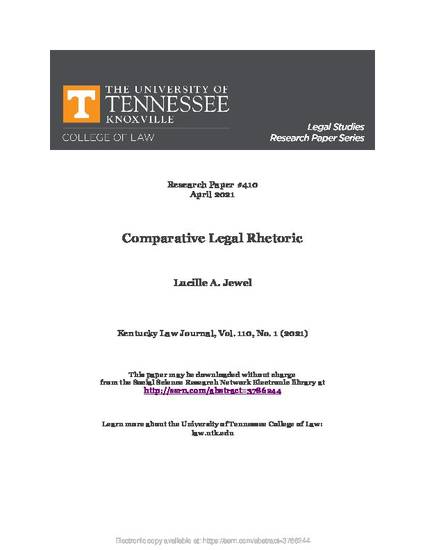
This paper theorizes a new discipline, comparative legal rhetoric, which can accomplish two important goals. First, in a society broken down by intractable polarization and win/lose dichotomies, comparative legal rhetoric identifies alternative, nontraditional and non-Western ways to communicate and persuade. How we talk is deeply connected to how we see the world. If we take a break from the win/lose argument structure that defines Western legal communication, we can uncover opportunities for understanding and healing. Second, a study of comparative legal rhetoric can generate cross-cultural understanding. This new discipline contains a trove of knowledge about how persuasion works in different cultures. Comparative legal rhetoric might also identify universal modes of persuasion, which would be useful knowledge for any law advocate.
In Part One of the paper, I briefly explain why the comparative study of legal rhetoric is important and how traditional legal rhetoric often fails to achieve justice and equality. In Part Two, I provide a foundational introduction to the feeder disciplines that inform the new discipline of comparative legal rhetoric––legal rhetoric, comparative law, comparative rhetoric, and comparative cognitive psychology. Part Three explores lessons that comparative legal rhetoric can teach, studying rhetorical practices located outside of mainstream U.S. culture, including Navajo legal rhetoric, Quaker rhetoric, restorative rhetoric, and citizen’s rhetoric. Studying and applying these new communication processes can help solve disputes in a way that fosters more empathy, equity, and justice.
